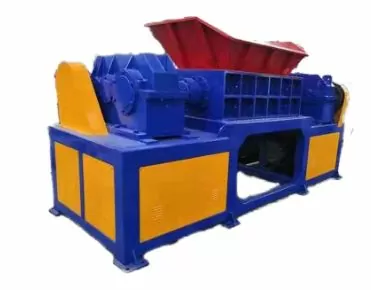Plastic pollution is no longer a “future problem.” It’s here, and it’s messy. As the CEO of Amige, I constantly hear plant managers complain about warehouses overflowing with rigid plastic waste, chaotic recycling systems, and heavy environmental pressure. This pain isn’t just the industry’s, it’s society’s. I’ve been “trapped by plastic” myself, until we decided to use shredding technology to change the game.
The answer is clear: under the global circular economy framework, plastic shredding technology not only handles waste efficiently but also improves recycling rates and material reuse value. By choosing the right machines, optimizing processes, and building standardized workflows, businesses can achieve both environmental and profit goals. According to the Global Circular Economy Data Report, such technologies have significantly reduced plastic waste emissions worldwide.
That’s just the tip of the iceberg. Let me share my firsthand experience on global plastic shredding practices, key methods, and their real impact.

What are the characteristics of plastic shredding technologies in the global circular economy?
In Europe, North America, and Asia, each region takes a slightly different shredding approach. Some prefer high-torque twin-shaft shredders, others opt for high-speed blade machines. According to the Two Shaft Shredder For Chemical Drum, twin-shaft machines are more stable for thick, hard plastics, while high-speed single-shaft shredders excel with films and softer plastics.
At trade shows I see a clear trend: modular design. Companies can swap blades, adjust screen sizes, and even integrate pre-treatment and sorting into one unit. This gives incredible flexibility for different material streams.
Why is plastic shredding so critical for the circular economy?
Circular economy principles emphasize resource recovery. Without efficient shredding, downstream washing, sorting, and pelletizing simply can’t happen. The Global Circular Economy Index 2025 points out that shredding quality directly affects recycled resin purity and market value.
From my own factory experience, better shredding means higher throughput, lower energy use, and slower blade wear. I once used a low-end machine and dulled blades in three days; after upgrading, throughput rose by 30% and energy consumption fell by 15%.
How do plastic shredding practices differ across regions?
Europe’s strict regulations demand energy-efficient, fully enclosed shredding lines. In Southeast Asia, I see more low-cost, flexible modular solutions. North America is big on automation and data monitoring, with sensors and IoT tracking machine health in real time.
These differences mirror recycling systems and market needs. The Double Roll Shredder For Jumbo Bags Recycling analyzes this in detail. With clients worldwide, I often tailor our systems to meet specific local standards.
How do we measure the effectiveness of plastic shredding?
I use three main metrics: throughput capacity, energy per ton, and quality of recycled output. Throughput is measured in tons per hour, energy by kWh per ton, and output quality by melt flow and impurity content. The Plastic Shredding Performance Report provides industry benchmarks.
Effectiveness isn’t just technical. It’s economic. One partner upgraded their shredding line, saved on electricity each month, and sold their recycled material at 20% higher prices thanks to improved quality.
How important is integration of shredding with other processes?
Very. Shredding alone solves the “size” problem; integrating washing, sorting, and pelletizing solves the “value” problem. At Amige we design full lines with shredding, washing, dewatering, sorting, and packing—fully automated.
This integration boosts efficiency, cuts labor, and reduces cross-contamination. The Integrated Plastic Recycling Study shows production increases of 30–40% through such setups.
What challenges exist in promoting plastic shredding technology worldwide?
Plenty. High upfront costs, frequent blade maintenance, inconsistent technical standards, and underdeveloped recycling infrastructures. But the biggest challenge is mindset. Many firms still treat waste plastic as garbage instead of a resource.
I often joke at conferences: “You’re not smashing trash, you’re breaking money into smaller pieces and selling it back to the market—that’s not magic, that’s the circular economy.” Changing that mindset takes time. The Double Single Shaft Shredder For Waste Clothes summarizes key obstacles.
How can innovation improve plastic shredding effectiveness?
Innovation isn’t only about blade alloys and motor power. We’re testing AI algorithms to adjust feed rates automatically, matching shaft speed to plastic hardness. We’ve also chilled thermoplastics before shredding to make them more brittle and easier to cut.
The Two/double shaft shredder for car bumper recycling lists many such examples. Sometimes a small process tweak boosts capacity and lowers energy costs without big investments.
What trends will shape plastic shredding in the global circular economy?
I see three: smart systems, green efficiency, and standardization. Smart systems mean self-diagnosis and remote monitoring. Green efficiency cuts noise and power use. Standardization harmonizes blade interfaces, screen sizes, and particle outputs.
Behind these trends are global policy pushes and market shifts. The Future Circular Economy Trends Report predicts that by 2030, 80% of global plastic recycling lines will feature intelligent monitoring systems.
Conclusion
Plastic shredding is more than “breaking stuff up.” It’s a critical piece of the global circular economy. Used wisely, it turns waste into resources, pressure into profit, and sustainability into competitive edge—the exact philosophy we practice at Amige.
